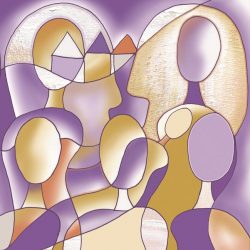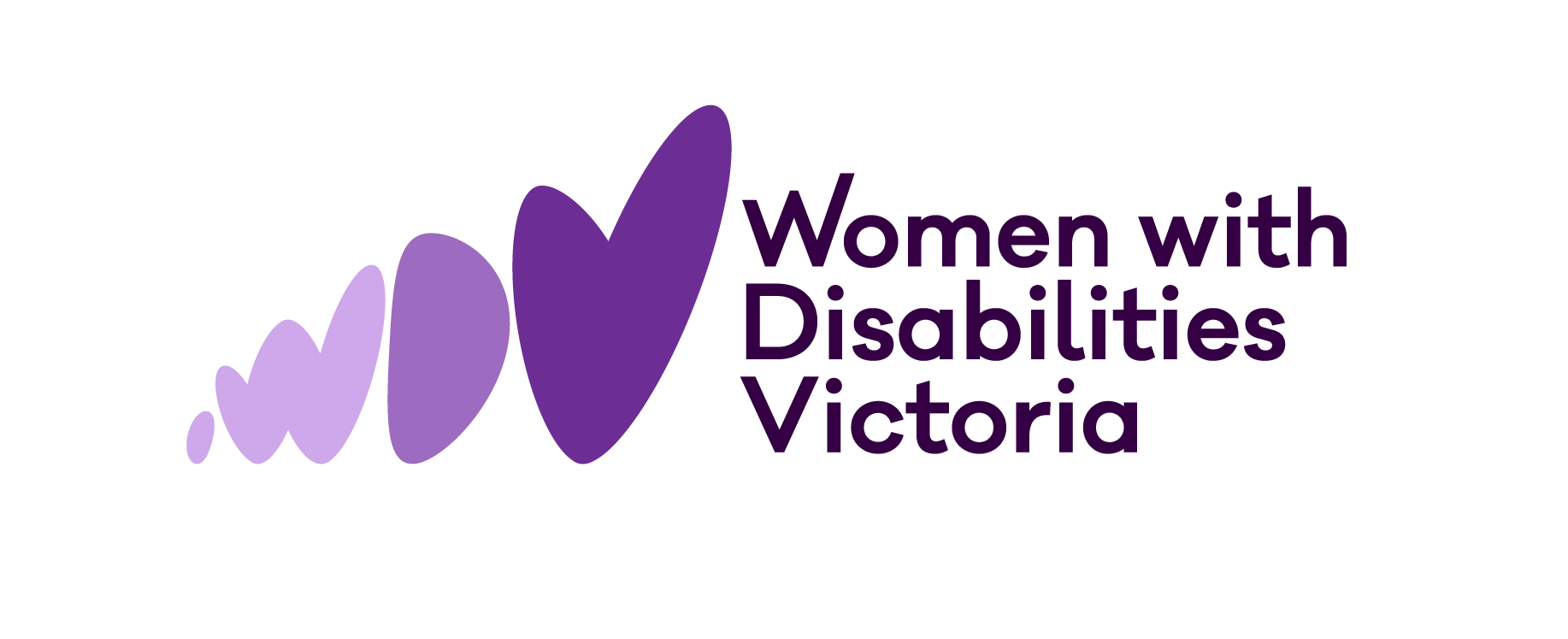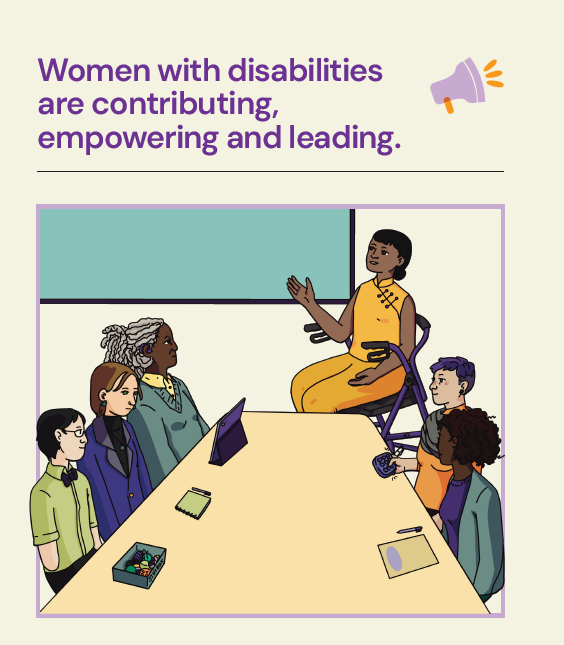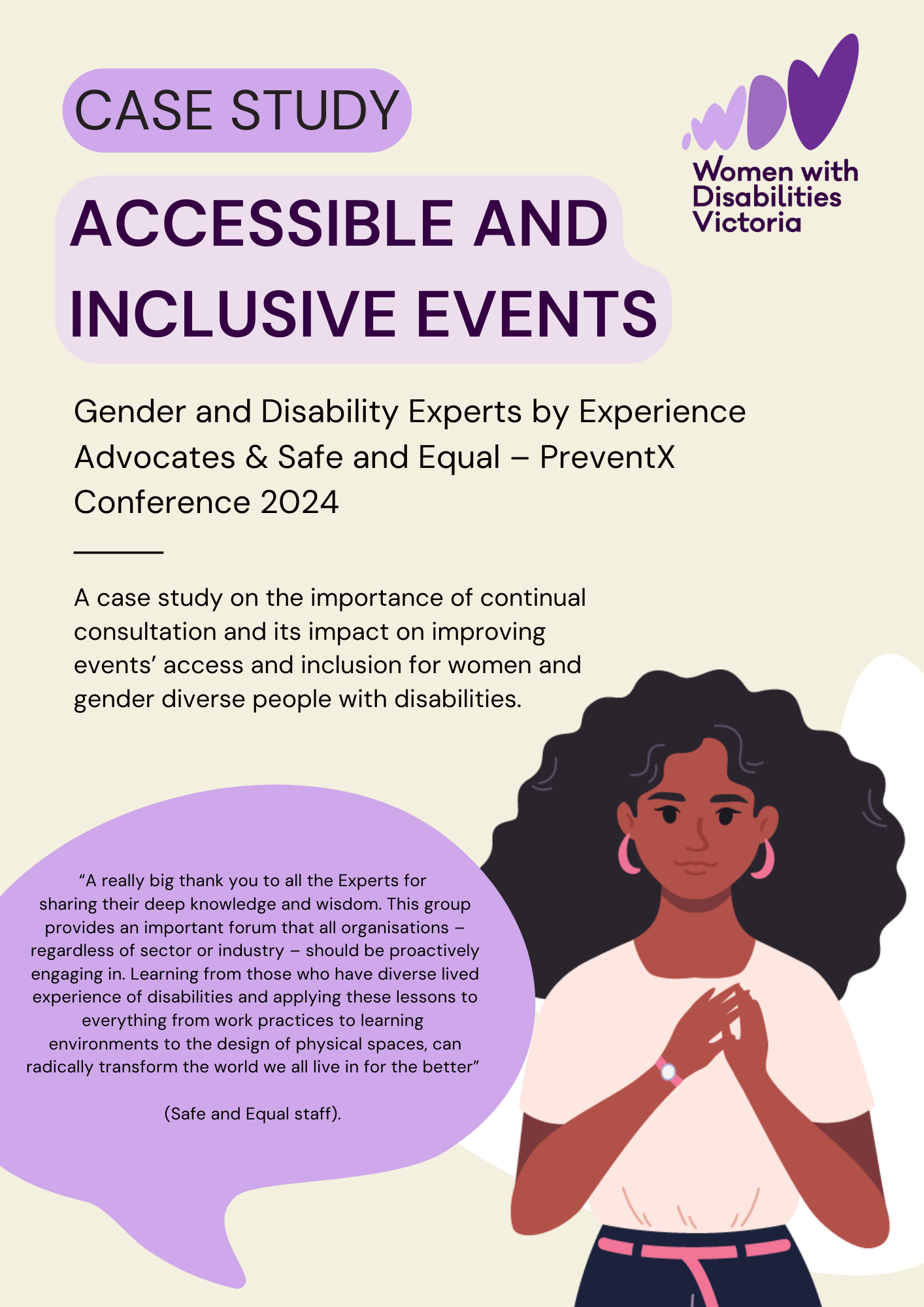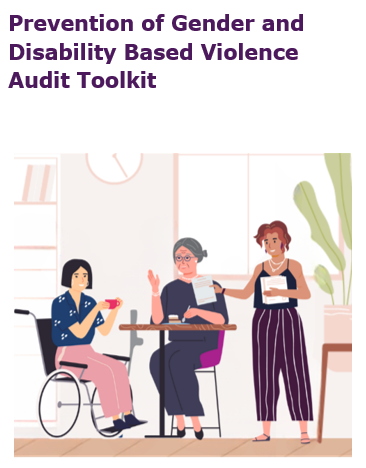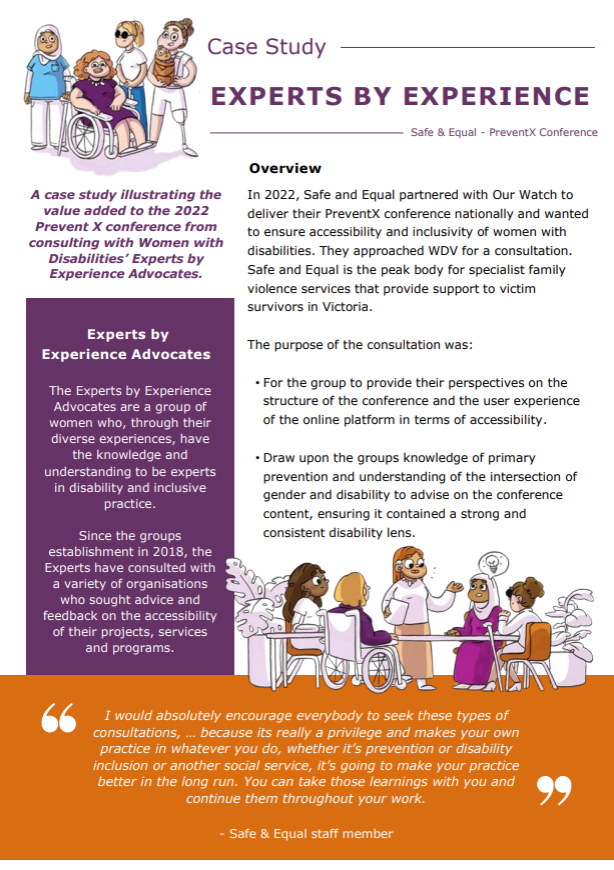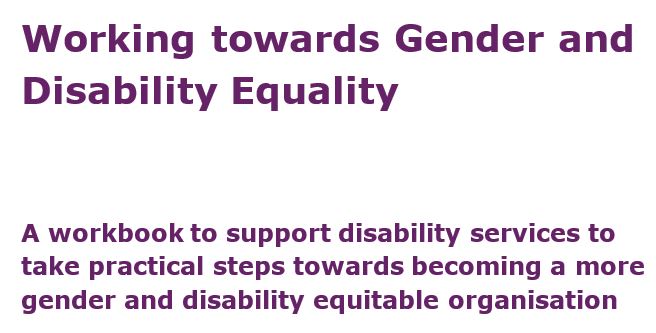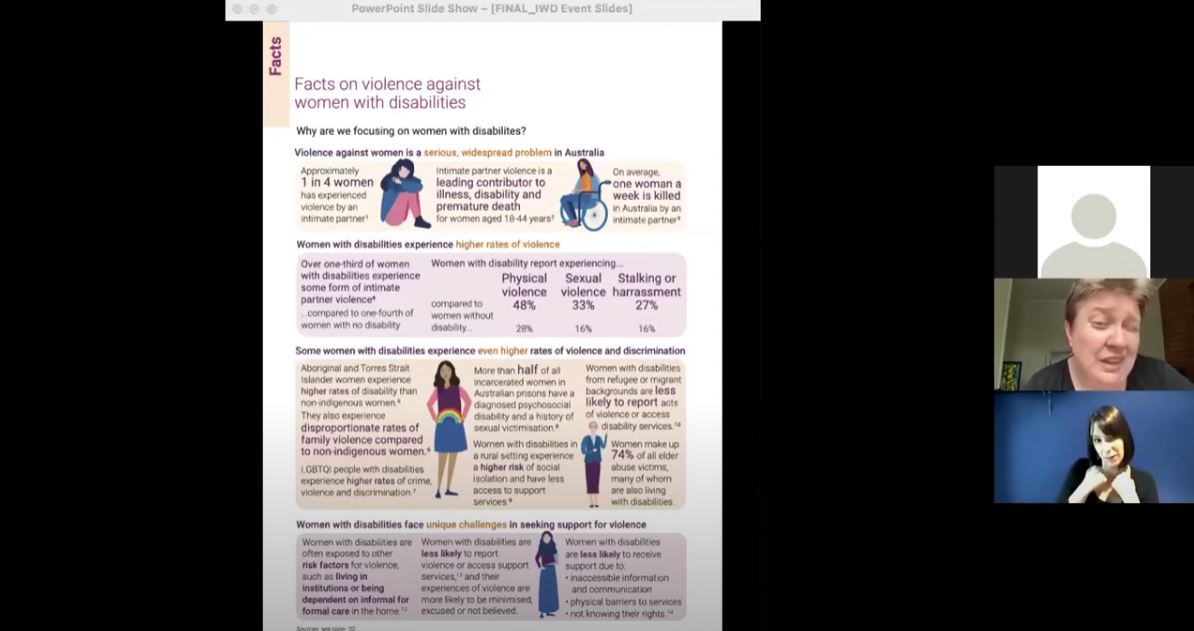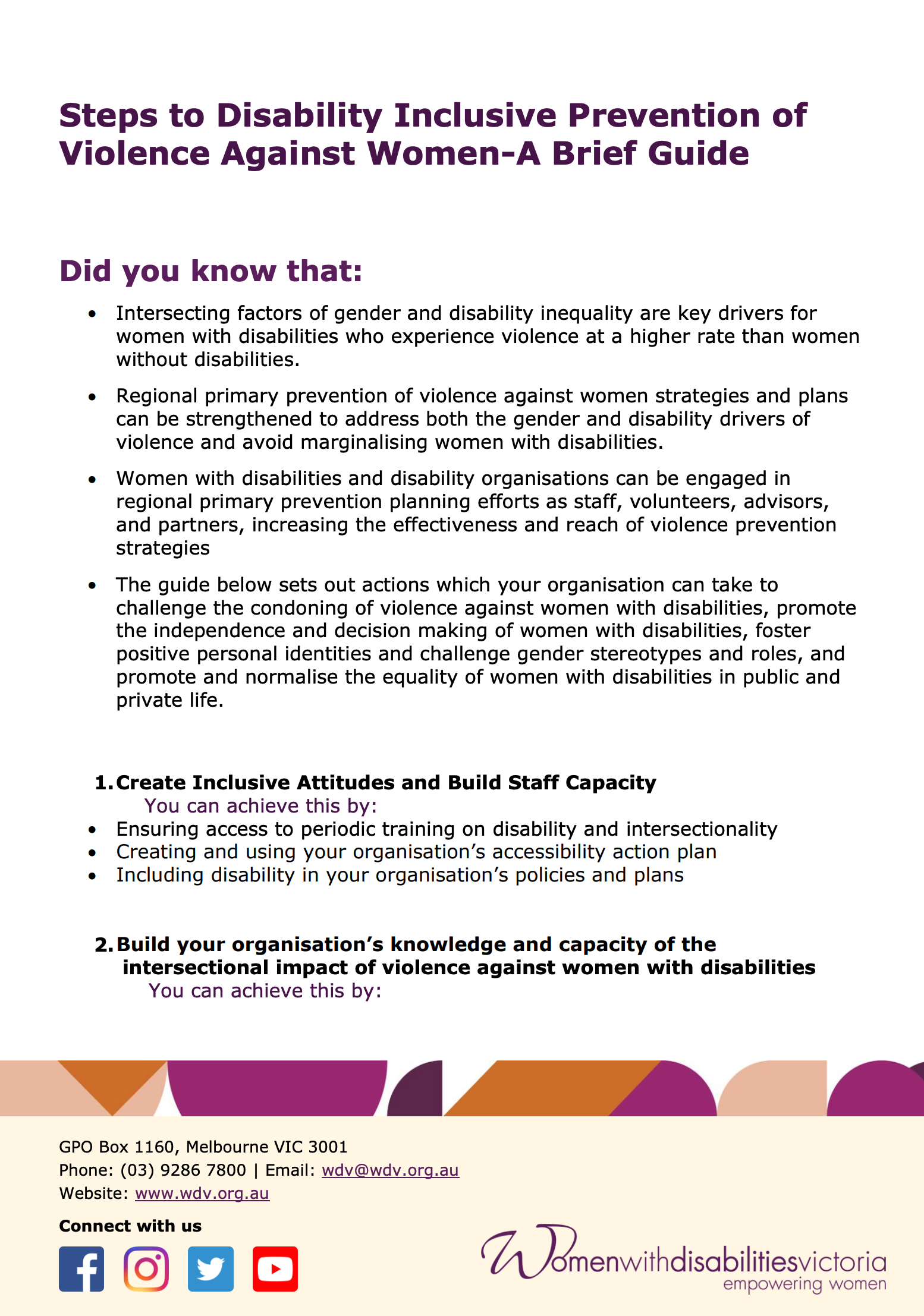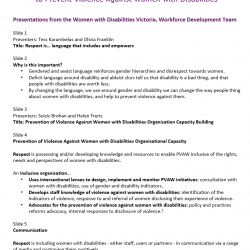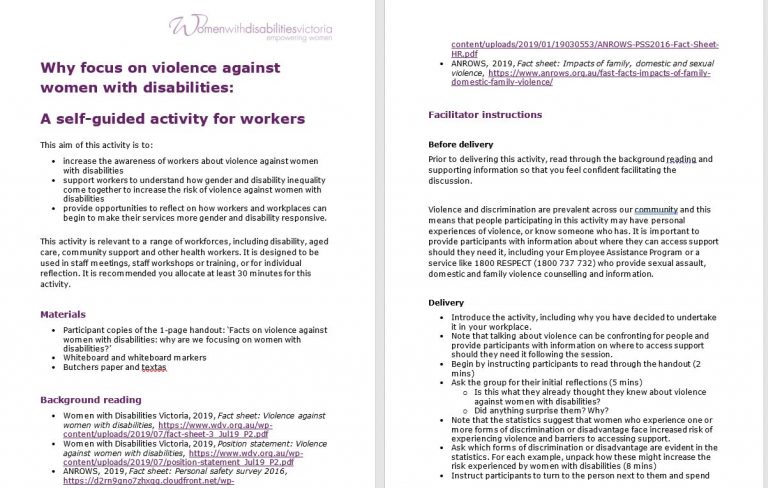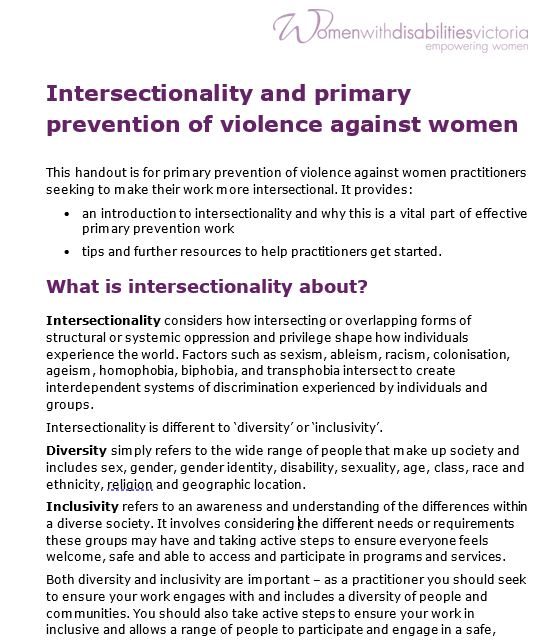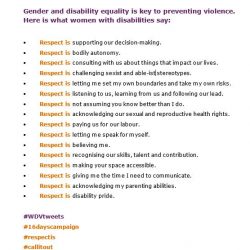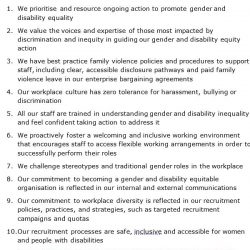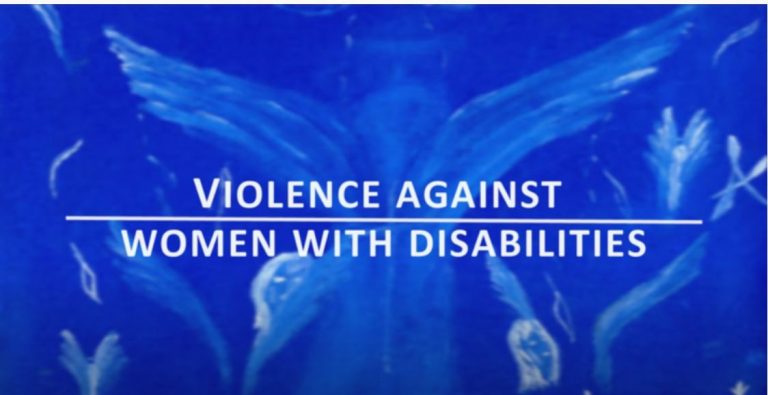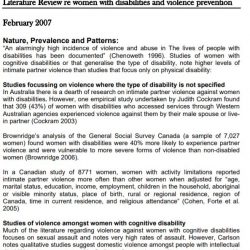Violence Prevention Resources
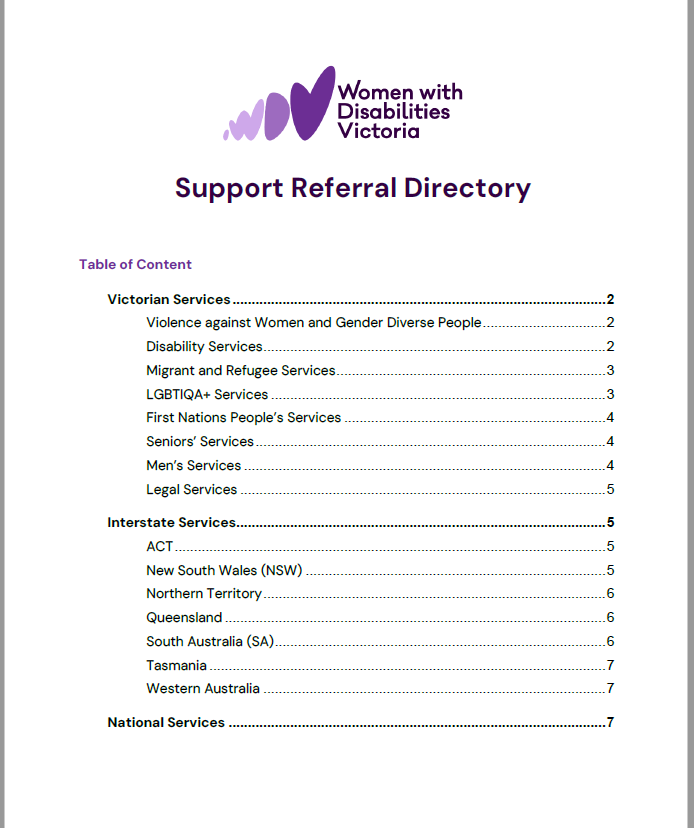
Suppport Service Referral Options
A list of specialist support services within Victoria and Australia that work directly with people who are experiencing or are afraid of experiencing family violence and/or sexual assault. If you’re in immediate danger, call 000 for the Police, ambulance and/or fire emergencies.
2025
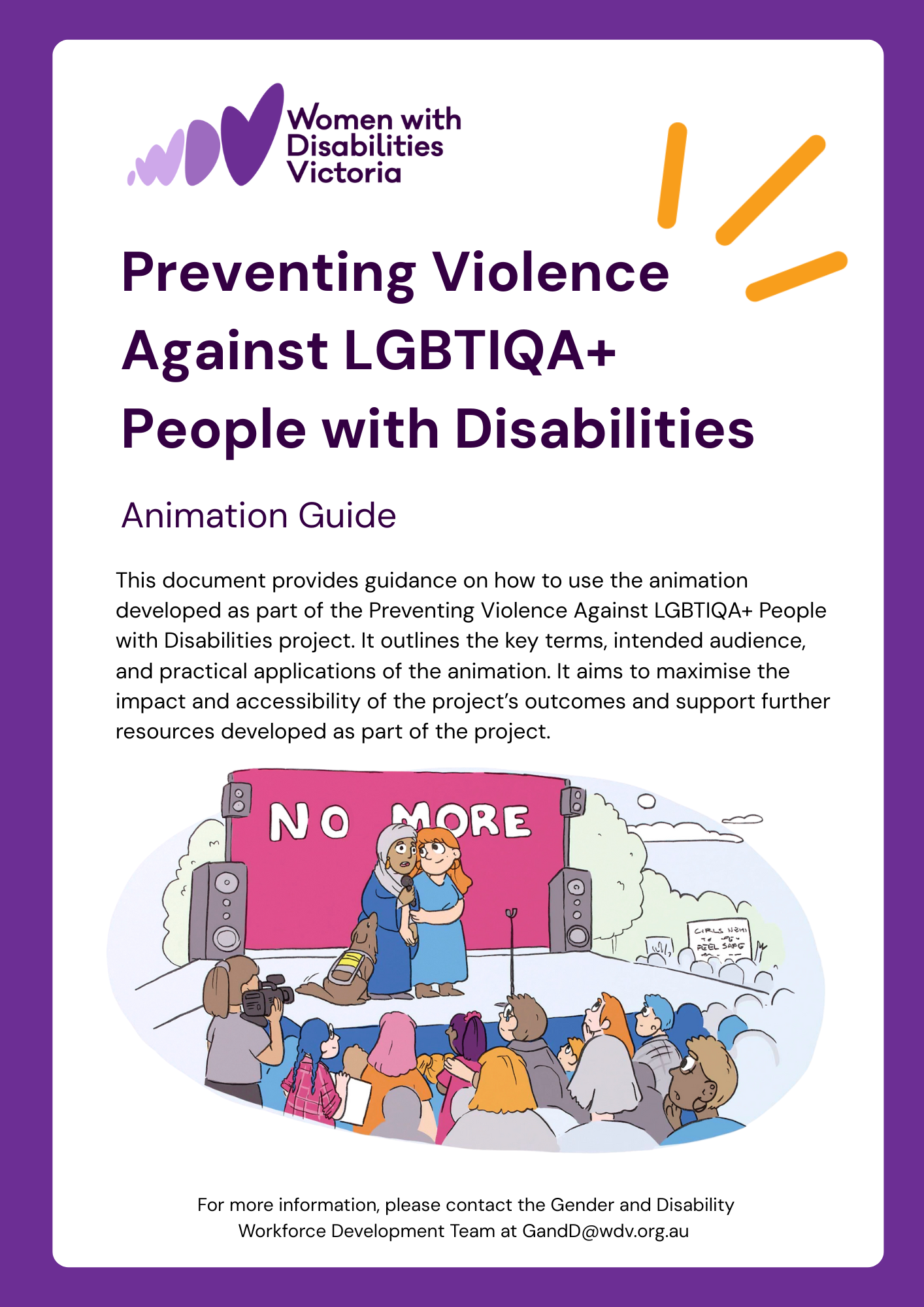
Preventing Violence Against LGBTIQA+ People with Disabilities
A collection of resources that aim to build and deepen understanding of the intersection of gender, disability, and LGBTIQA+ identities to take action to promote gender and disability equality for LGBTIQA+ people with disabilities.
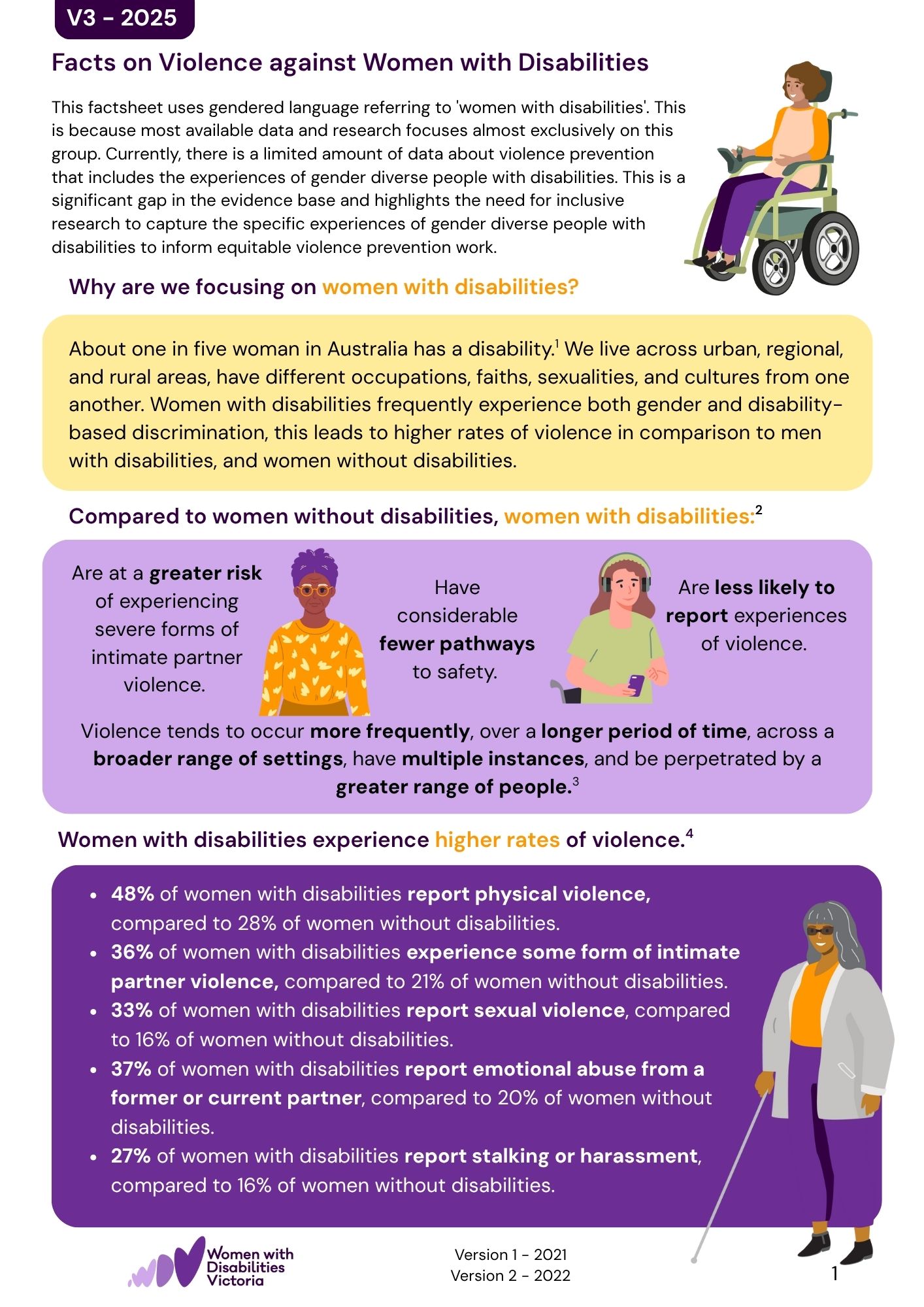
Facts on Violence against Women with Disabilities
This is a quick reference to key statistics on violence against women and girls with disabilities in Australia. When talking about violence against women, statistics are frequently at the centre of the discussion, however, the information that reflects the experiences of violence against women is complex. The information presented highlights specific statistics focused on women with disabilities and the complexity of intersectionality and associated statistics.
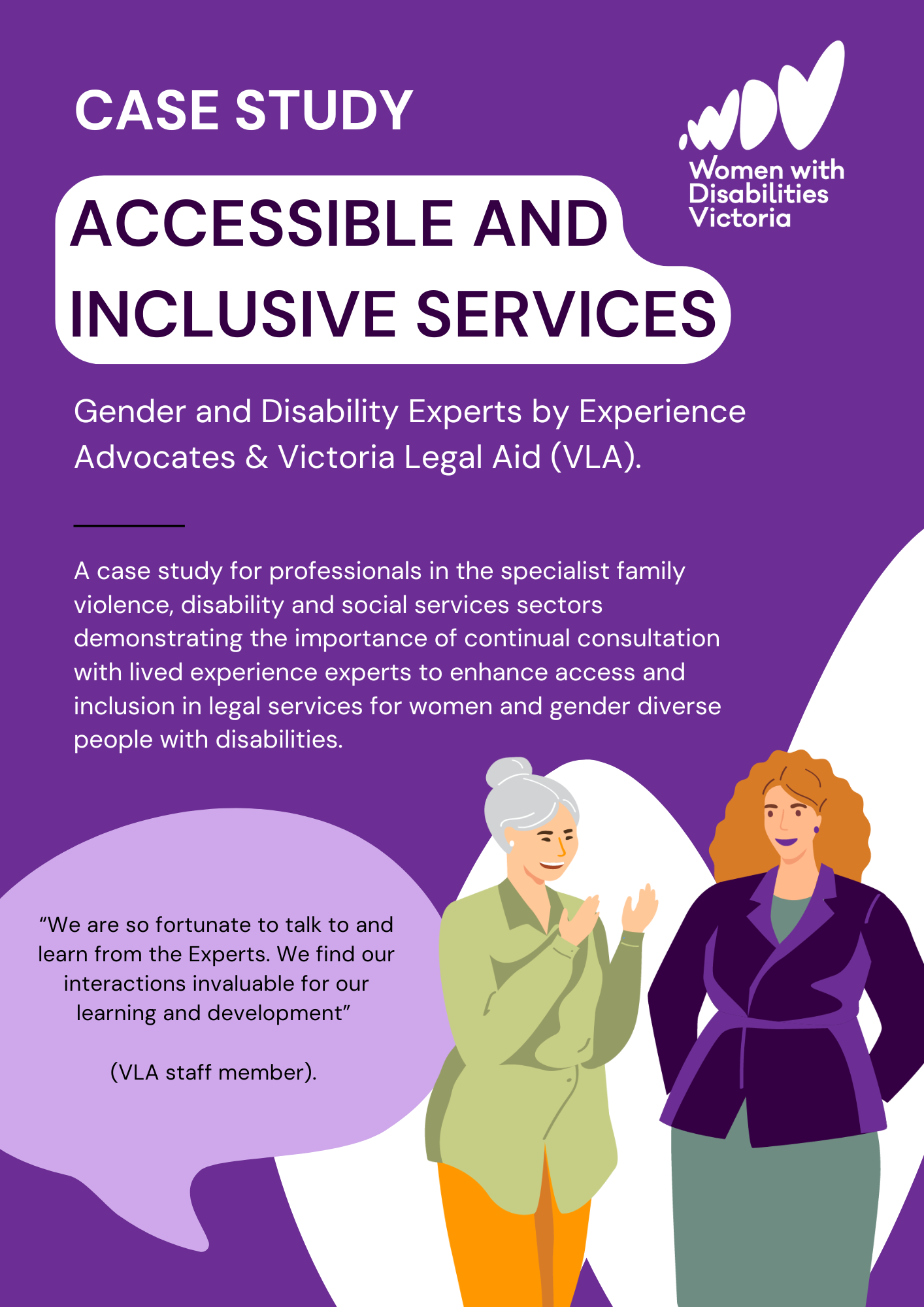
WDV & Victoria Legal Aid Accessible and Inclusive Services Case Study
A case study demonstrating the importance of continual consultation with Women with Disabilities’ Experts by Experience Advocates to enhance access and inclusion in legal services for women and gender diverse people with disabilities

Pleasure and Consent for Women and Gender Diverse People with Disabilities
Women with Disabilities Victoria’s Victorian Women’s Health Program, in collaboration with the Gender and Disability Workforce Development Program, produced a suite of resources focused on increasing access to pleasure and consent in health promotion and violence prevention with women and gender diverse people with disabilities.
The project intends to build the capacity of workforces across the healthcare and gender-based violence prevention systems in Victoria.
2024
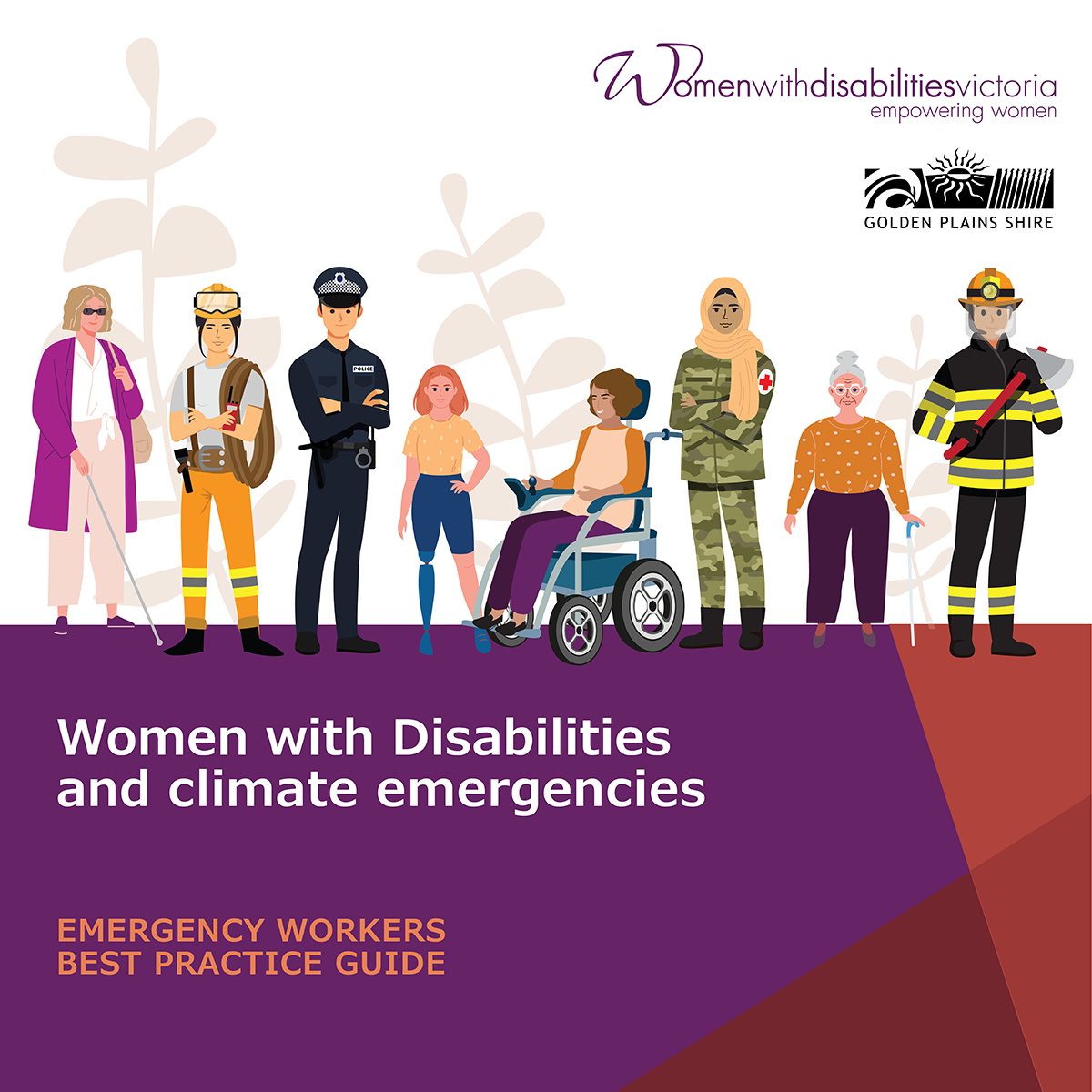
Preventing Violence Against Women with Disabilities in Climate Emergencies
A set of two resources developed to increase the confidence of support agencies, emergency workers, and community members in their actions to prevent violence against women with disabilities during climate emergencies.
For Emergency Workers
For Community
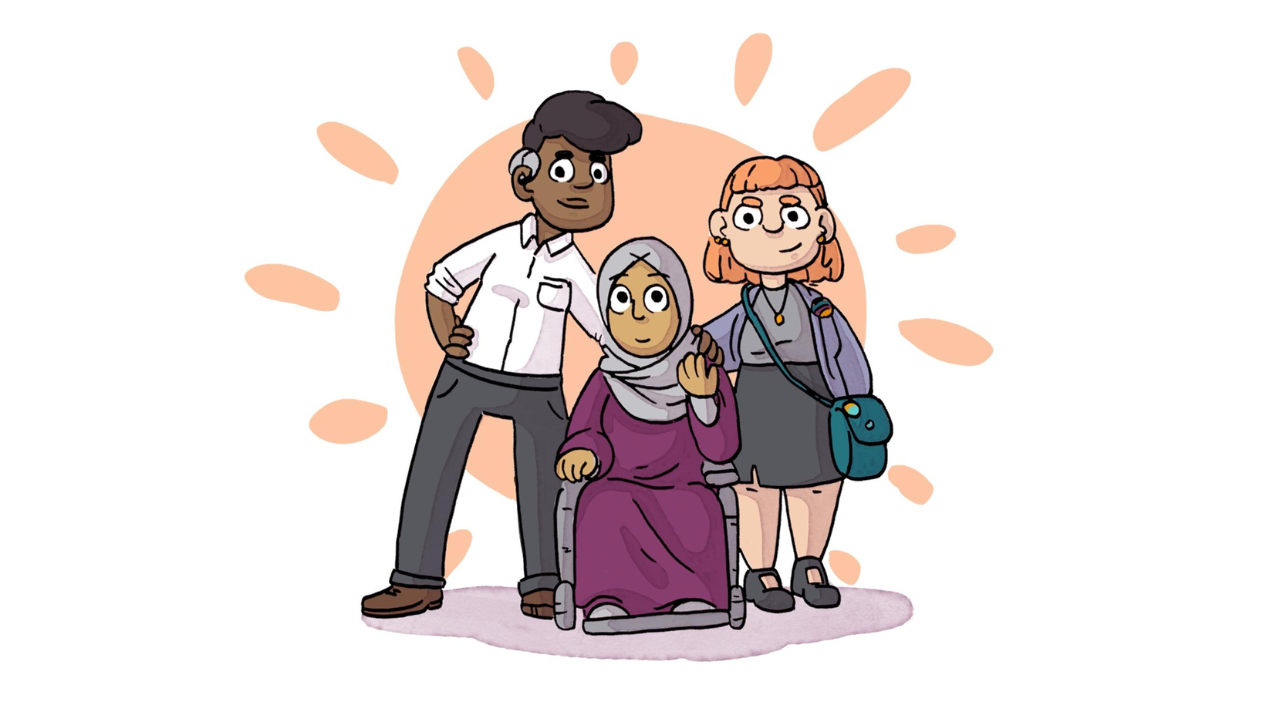
Preventing Violence Against Women with Disabilities and Multicultural Communities
A collection of resources that aim to build and deepen understanding of the intersection of race, gender, and disability to take action to promote gender and disability equality for migrant and refugee women, non-binary and gender diverse people with disabilities.
2023
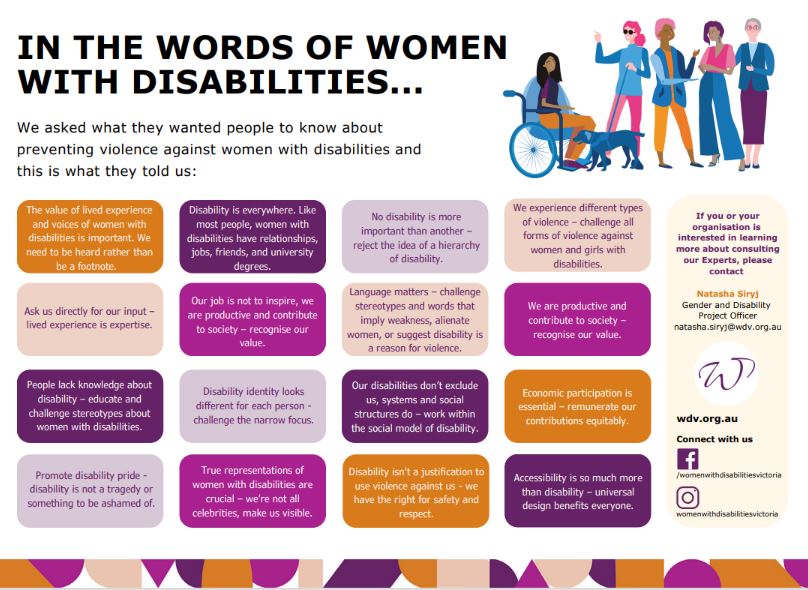
In the words of Women with Disabilities – a lived experience poster
A co-designed lived experience poster highlighting the voices of our Gender and Disability Experts by Experience Advocates. This resource is what women with disabilities want people to know about preventing violence against women with disabilities and calls for action to promote gender and disability inclusion.
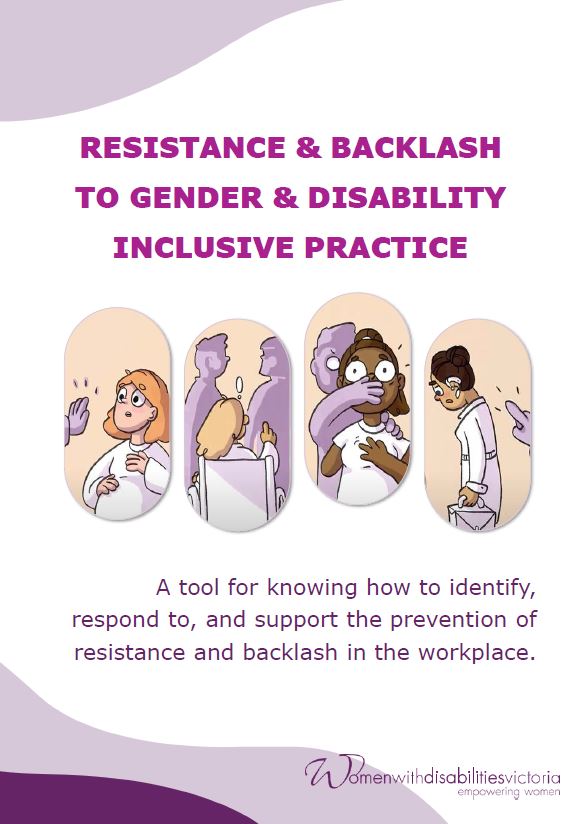
Resistance & Backlash to Gender and Disability Inclusive Practice
Resistance & Backlash to Gender and Disability Inclusive Practice resource describes the ‘spectrum’ of forms of resistance and helps identify how it can take place in the workplace when implementing preventing initiatives. This tool will help you to better identify and challenge barriers of ableism and gender inequality in workplaces to prevent violence against women with disabilities.
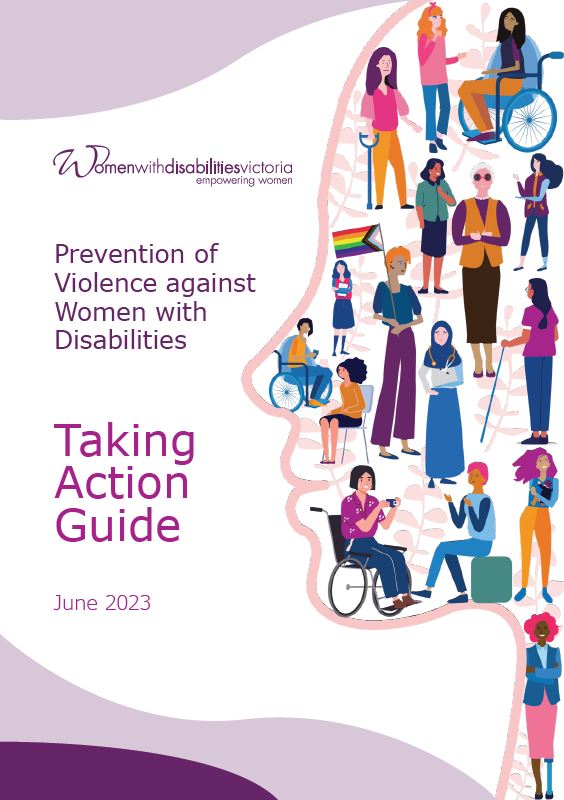
Taking Action Guide: Prevention of Violence against Women with Disabilities
The Taking Action Guide provides workforces in the social services, disability sector, local government, and prevention settings with information to increase awareness, skills, knowledge, and confidence to implement prevention strategies in their workplace. It brings together a number of key Women with Disabilities Victoria resources to showcase an intersectional perspective of prevention of violence against women- specifically focusing on gender and disability.
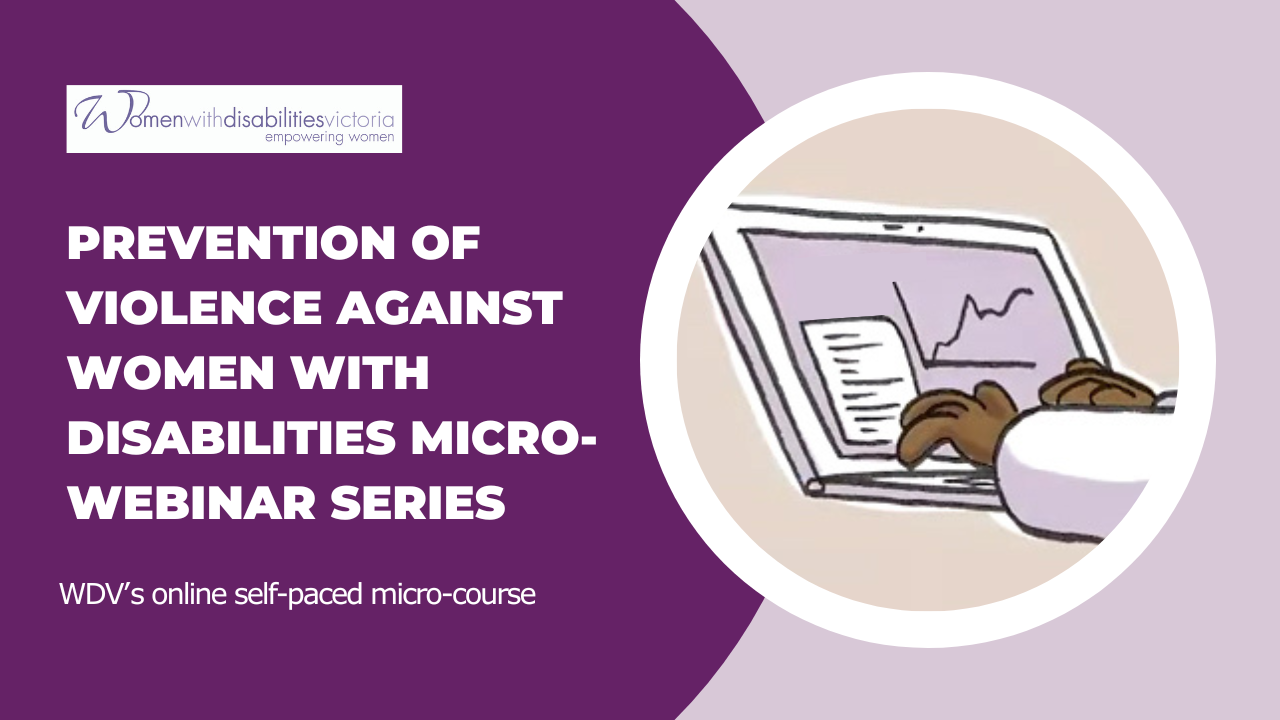
Prevention of Violence Against Women with Disabilities Micro-webinar Series
WDV’s online self-paced, micro-courses, aimed specifically at disability, prevention, social services, and government workforces to understand how easily violence against women with disabilities can occur and what actions you can take to prevent it.
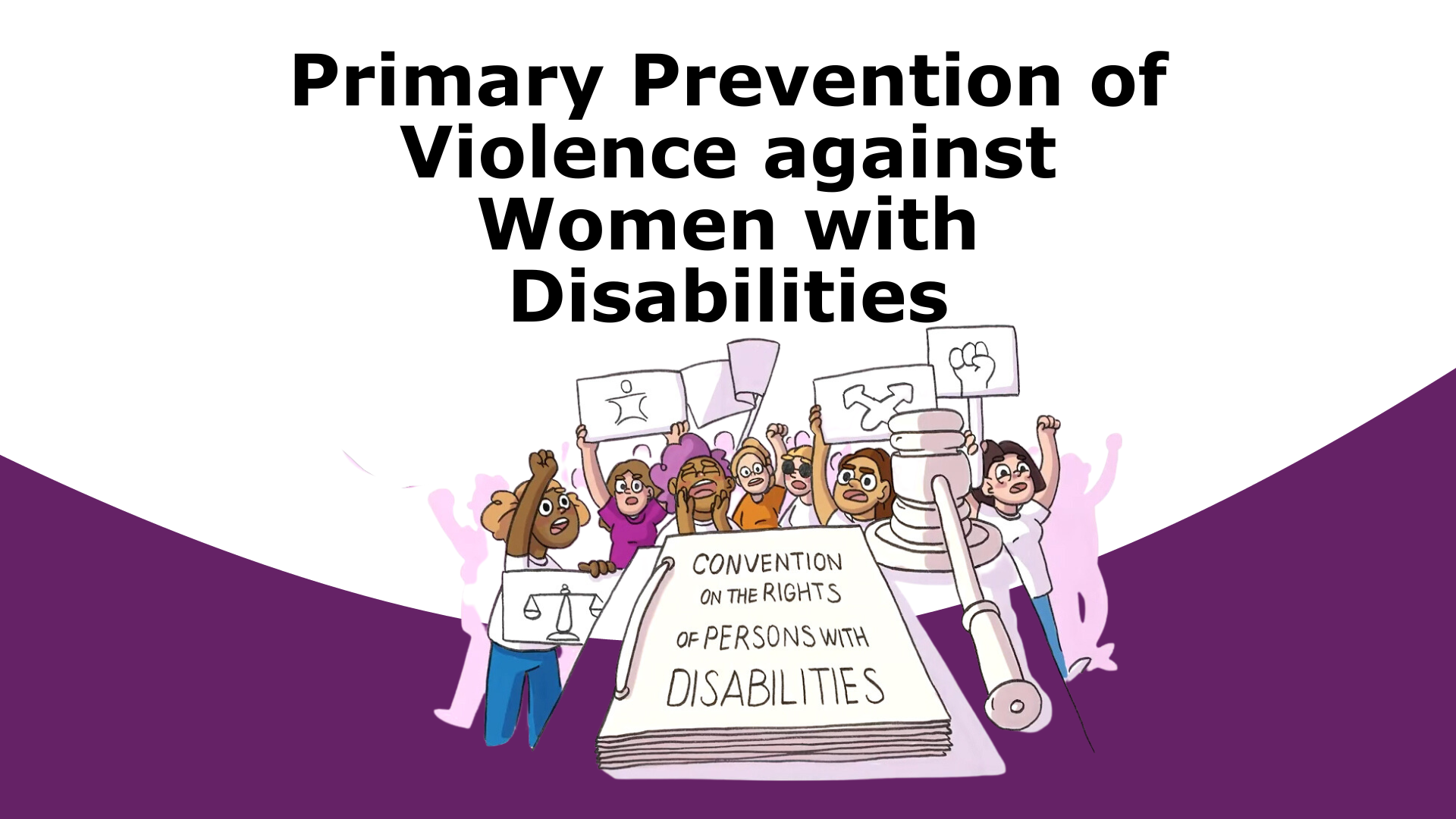
Primary Prevention of Violence against Women with Disabilities video resource
The Primary Prevention of Violence against Women with Disabilities video resource features the voices of 5 women with a disability and 1 ally. These women speak about the evidence-based drivers of violence against women with disabilities and share real life experiences of what these drivers look like in everyday life. The resource is a call to action to embed prevention in all parts of society.
The videos are available in full-length or divided into 5 shorter chapters. Each video is available in Auslan or as an audio-described version. All videos have captioning.
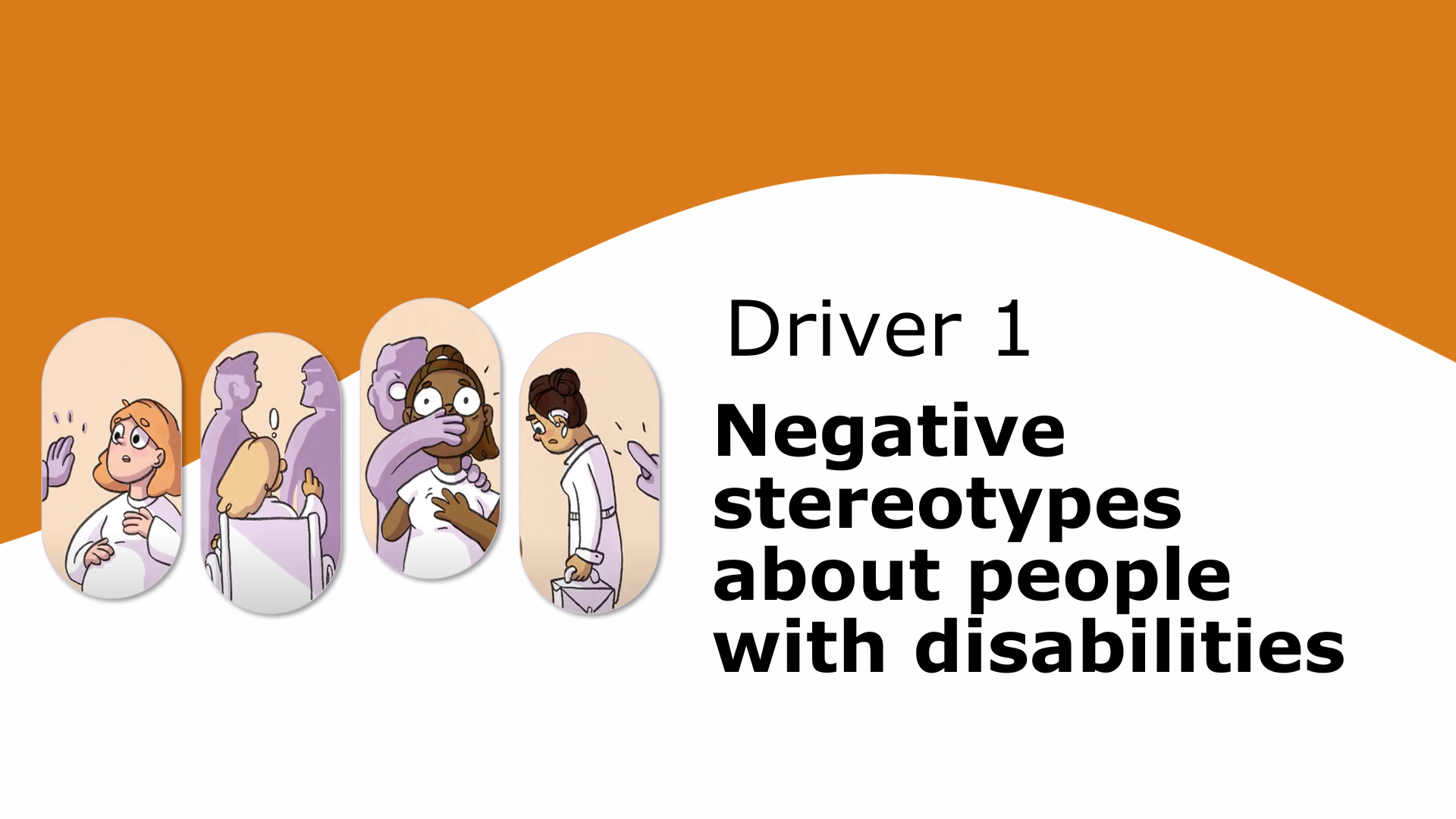
Chapters
Driver 1: Negative stereotypes about people with disabilities
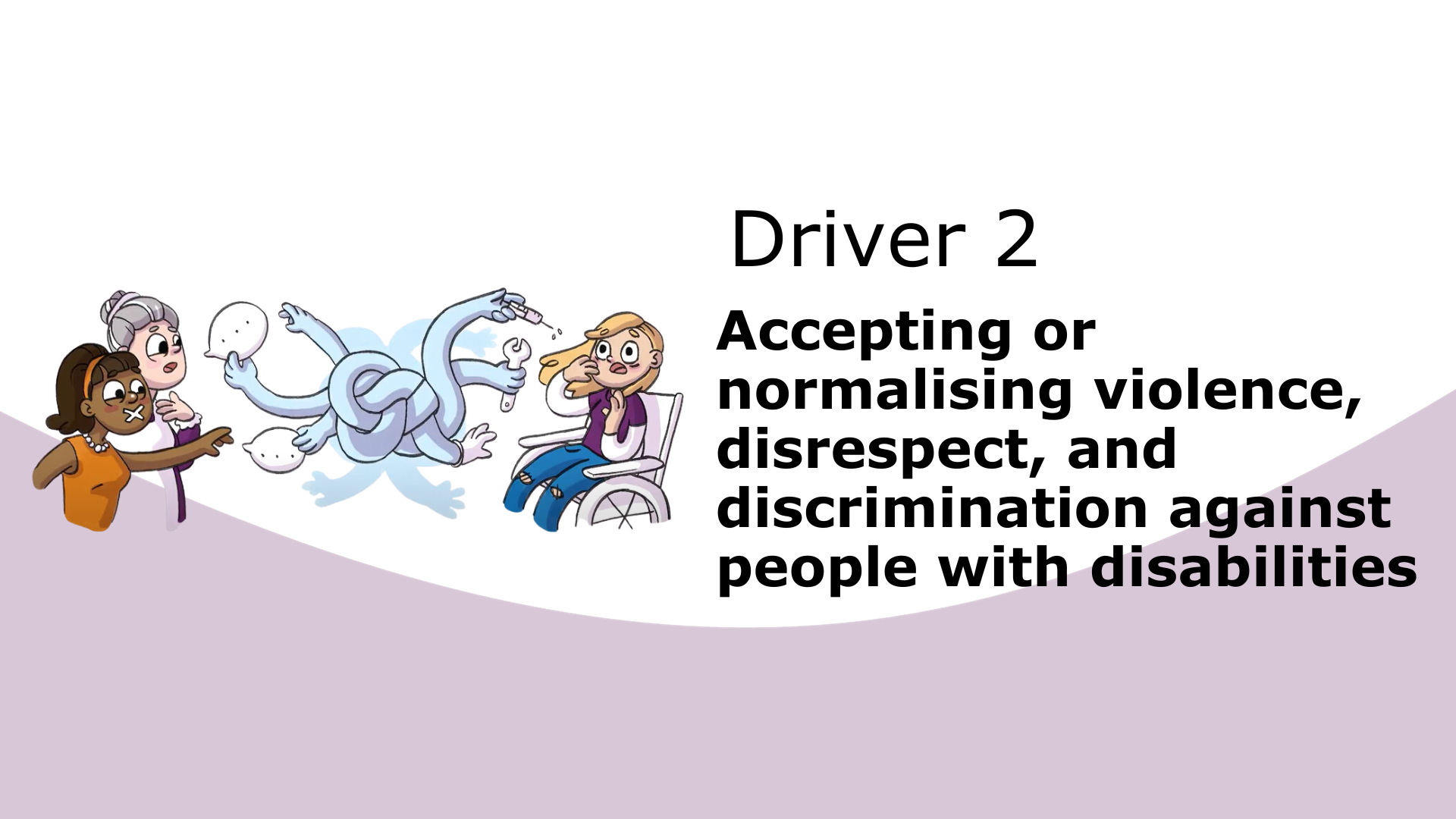
Driver 2: Accepting or normalising violence, disrespect, and discrimination
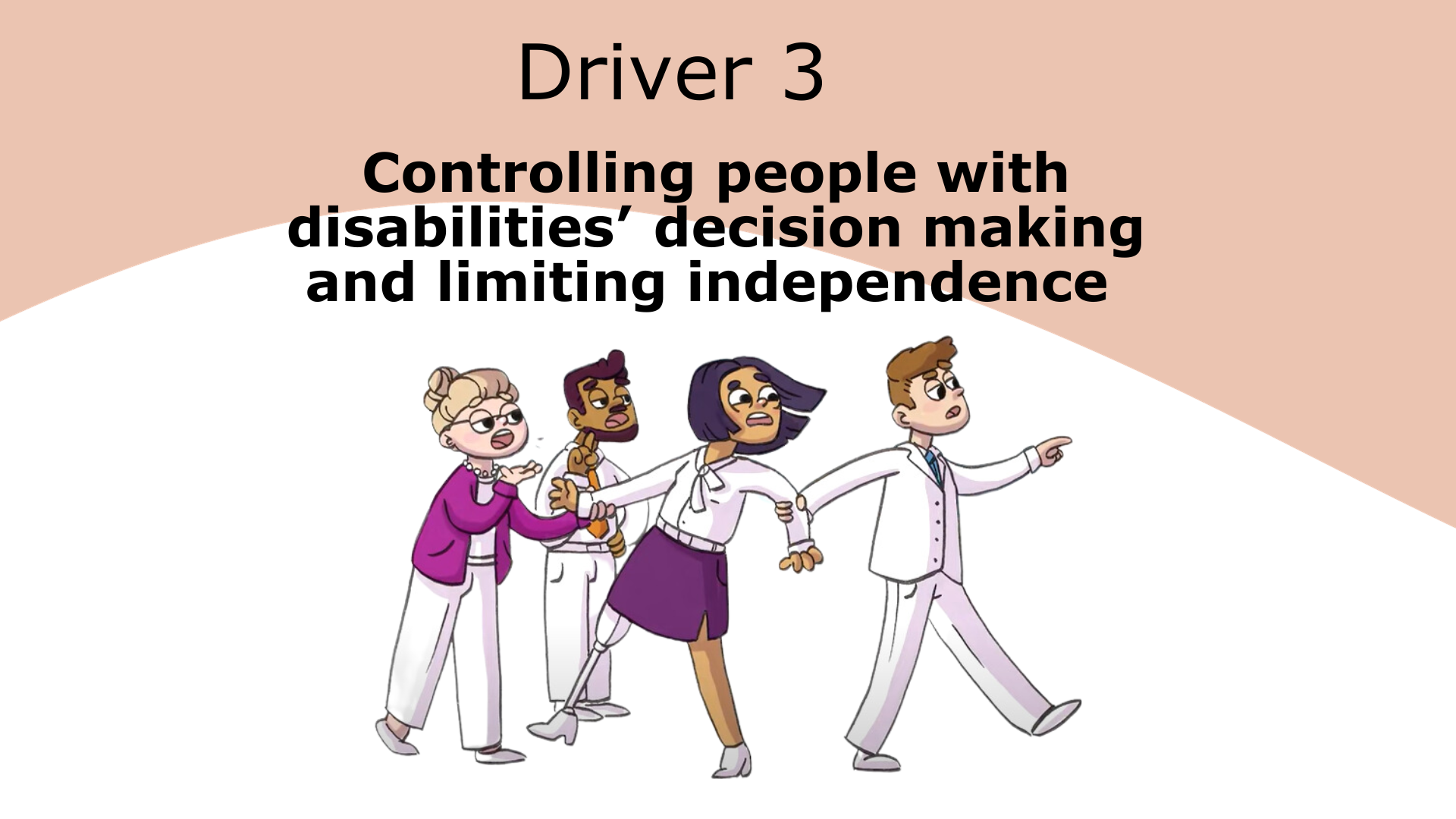
Driver 3 – Controlling people with disabilities’ decision making and limiting independence
The Primary Prevention of Violence against Women with Disabilities video resource features the voices of 5 women with a disability and 1 ally. These women speak about the evidence-based drivers of violence against women with disabilities and share real life experiences of what these drivers look like in everyday life. The resource is a call to action to embed prevention in all parts of society.
This chapter focusses on the control over people with disabilities’ decision making and limiting their independence.
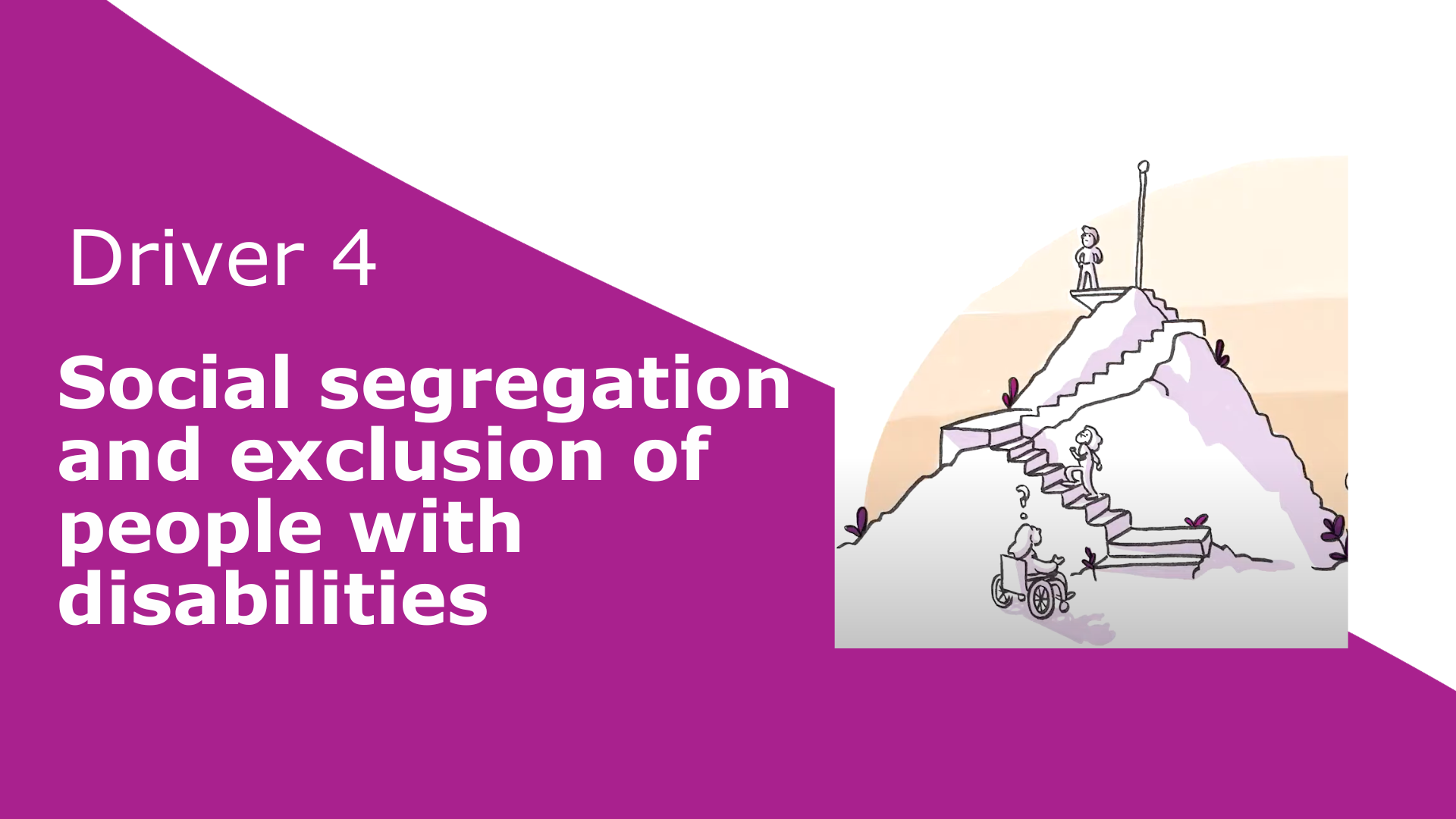
Driver 4 – Social segregation and exclusion of people with disabilities
The Primary Prevention of Violence against Women with Disabilities video resource features the voices of 5 women with a disability and 1 ally. These women speak about the evidence-based drivers of violence against women with disabilities and share real life experiences of what these drivers look like in everyday life. The resource is a call to action to embed prevention in all parts of society.
This chapter focusses on the impact of social segregation and exclusion of people with disabilities.
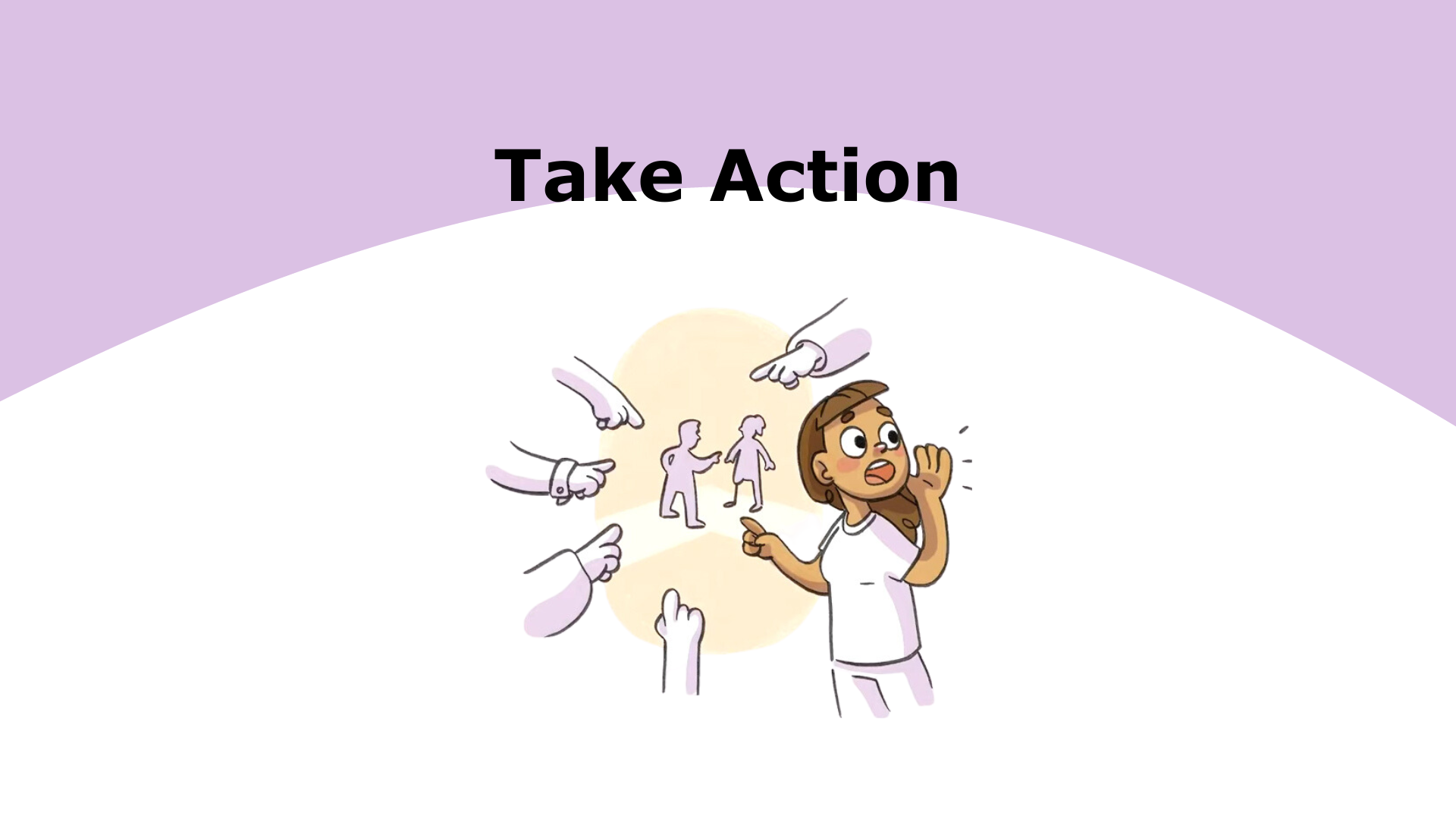
Take Action
The Primary Prevention of Violence against Women with Disabilities video resource features the voices of 5 women with a disability and 1 ally. These women speak about the evidence-based drivers of violence against women with disabilities and share real life experiences of what these drivers look like in everyday life. The resource is a call to action to embed prevention in all parts of society.
This chapter focusses on ways to take action against violence against women with disabilities.
2022
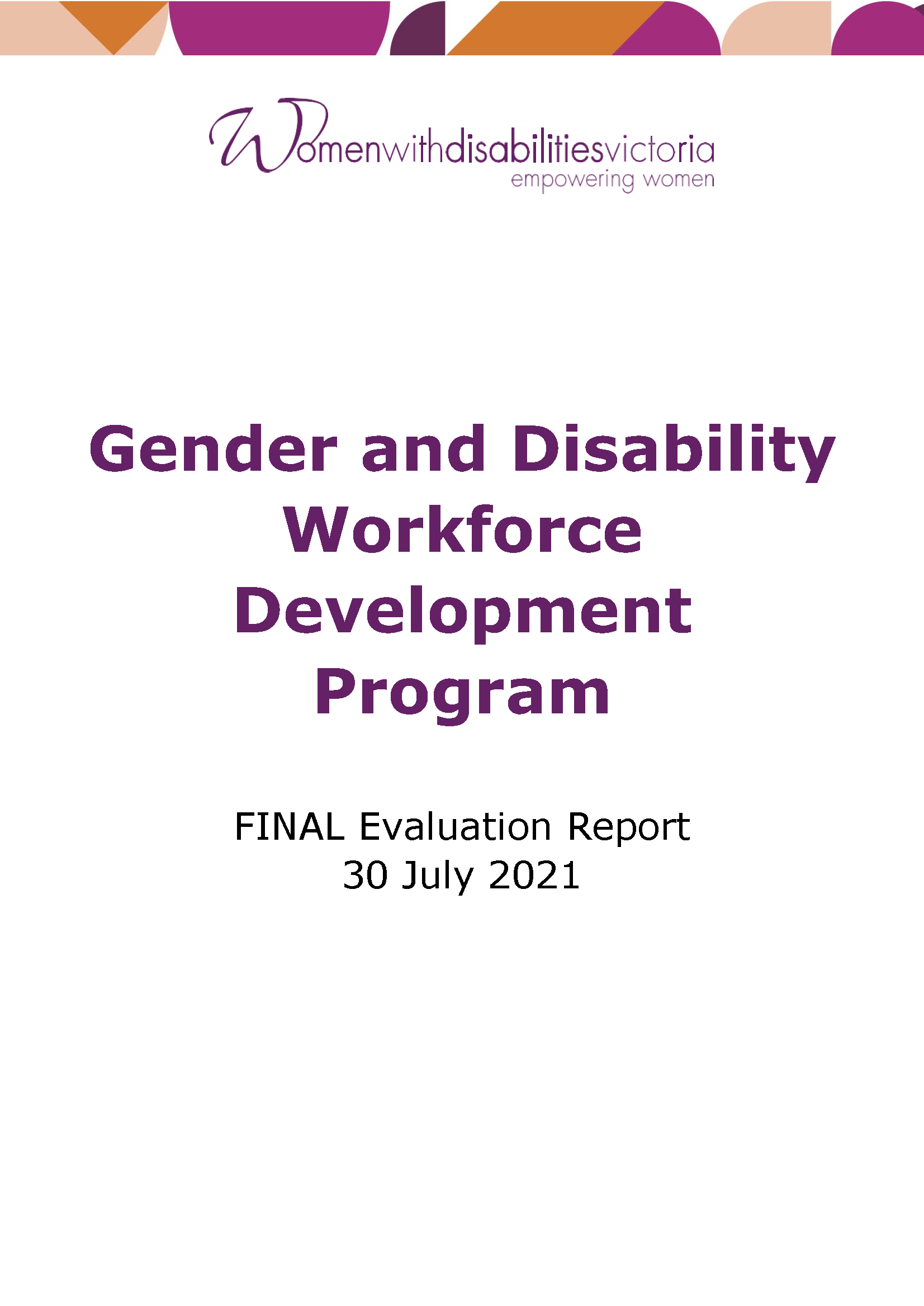
Gender and Disability Workforce Development Program Evaluation Report 2021
This report captures the achievements of, and lessons learned from, the design and implementation of the Gender and Disability Workforce Development Program over the two-year period from 2019-2021. This evaluation of the Gender and Disability Workforce Development Program was led by Wei Leng Kwok of WLK Consulting who is also the author of this report.
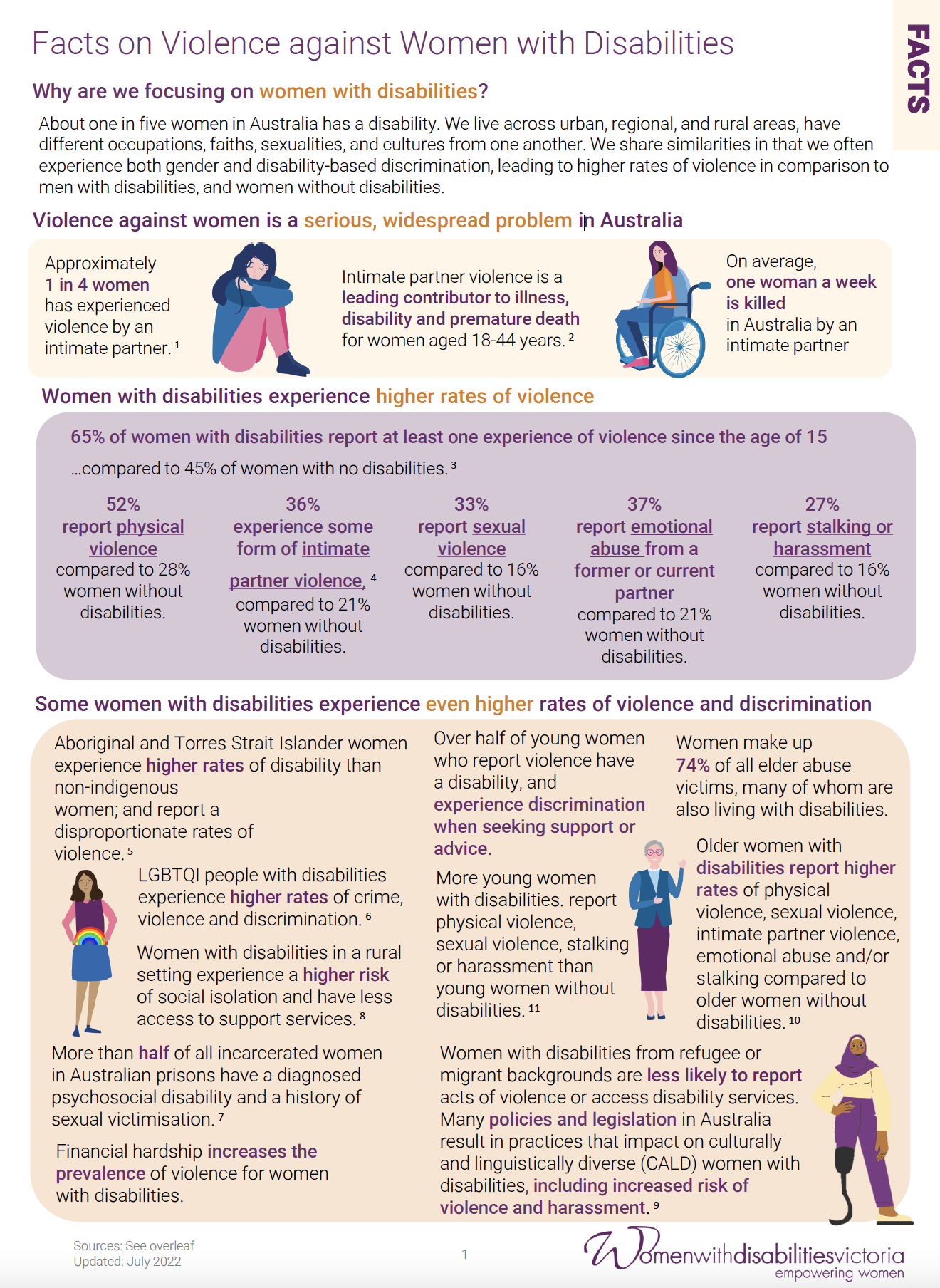
“Facts on Violence against Women with Disabilities 2022 - Why are we focusing on women with disabilities?”
This is a quick reference to key statistics on violence against women and girls with disabilities in Australia. When talking about violence against women, statistics are frequently at the centre of the discussion, however, the information that reflects the experiences of violence against women is complex. The information presented highlights specific statistics focused on women with disabilities and the complexity of intersectionality and associated statistics. This resource is evidence based and has been co-designed with women with disabilities and violence prevention expertise and representation.
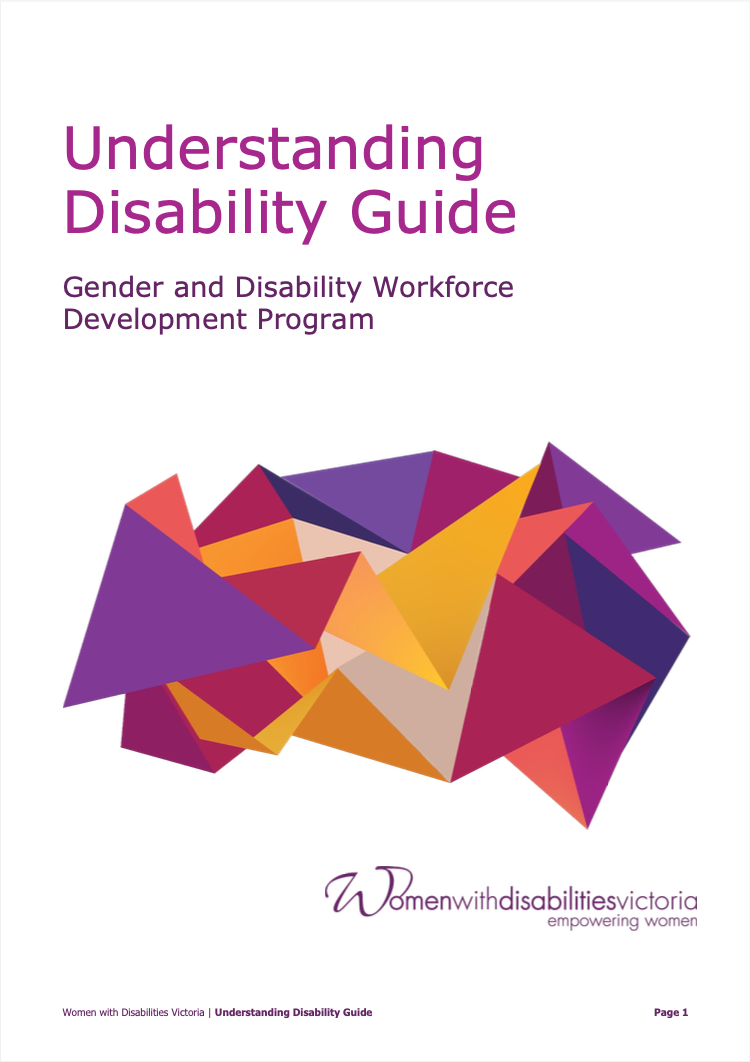
Understanding Disability Guide
The purpose of this guide is to provide information to workforces in disability, social services and violence prevention on how Women with Disabilities Victoria (WDV) understands disability, and how we want key stakeholders, policy makers, planners and other organisations to think about disability.
This guide is based on the Understanding Disability video (below). It explores 6 keystones, co-designed by women with disabilities, to provide understanding of respectful engagement and planning with women with disabilities.
2021

Understanding Disability animated video
Animated video with accompanying image description document introducing viewers to 6 keystones for how we understand disability and how we want others to understand disability:
- the social model of disability,
- the human rights model of disability,
- gender equality,
- intersectionality,
- centering lived experience, and
- disability pride.
When these 6 keystones are in place, we can work together for a more inclusive and equitable society.

Workforce Resources for Action
The Workforce Resources for Action have been developed to expand upon the important work of Change the Story by placing a disability lens over the gendered drivers of violence and the essential actions to prevent gendered violence.
By combining the evidence on what we know drives gender-based violence with the evidence and research on what we know drives disability-based violence, these resources can be used to take effective action in primary prevention of violence against women with disabilities.
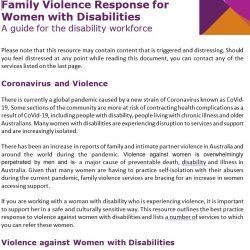
Family Violence Response for Women with Disabilities – A quick guide to safely managing disclosures
Family Violence Response for Women with Disabilities Guide
This resource outlines the best practice response to violence against women with disabilities and lists a number of referral services.
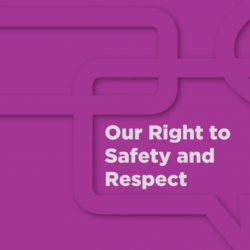
Our Right to Safety and Respect Resource (Safeguards Project)
Our Right to Safety and Respect Guidelines for developing resources with women with disabilities about safety from violence and abuse contains six good practice guidelines organisations can follow to create quality resources.
Each guideline has a set of indicators to show what good practice looks like and how to work towards it.
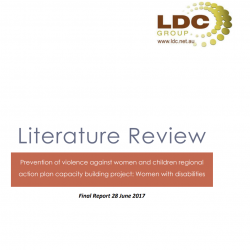
Prevention of violence against women and children regional action plan capacity building project
The specific focus of the project was on the disability related aspects of the Regional Action Planning Project in order to build the capacity of Prevention of Violence Against Women (PVAW) sector professionals to deliver high quality prevention of violence against women activities that are inclusive of women with disabilities.
Earlier
